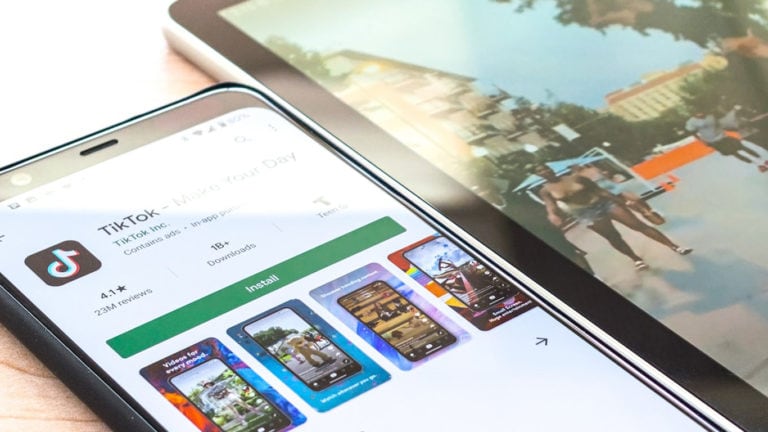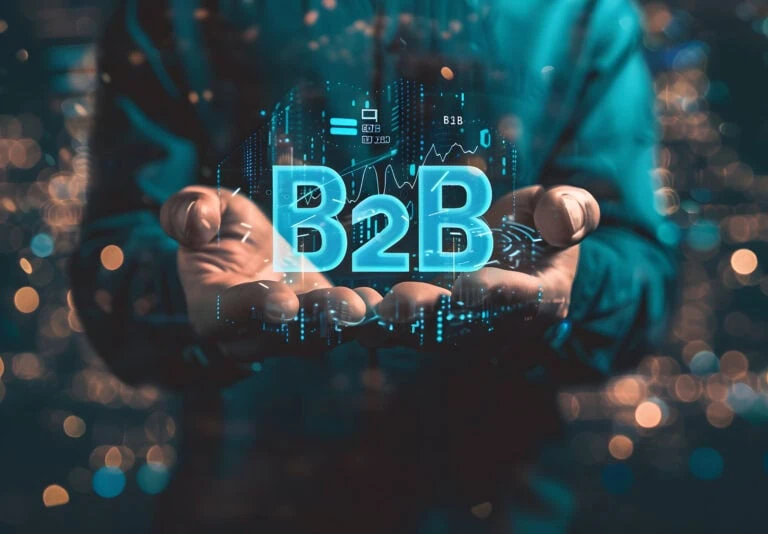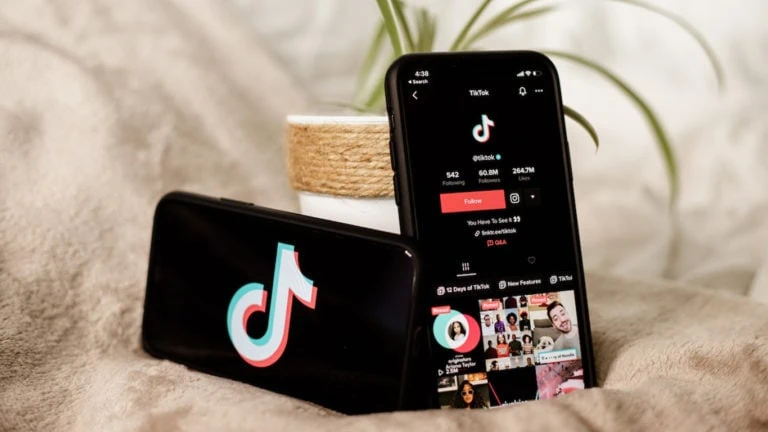52 Best Business Marketing & Branding Strategies In 2024
Ever felt that no matter what you do for your business, marketing and branding strategy isn’t moving the needle? Or did you feel like there are so many new marketing strategies and technologies that you can’t keep up? Each new year brings new changes that you need to adapt to quickly.
From the recent advancements in AI to increasingly complex customer demands, it is now more important than ever to transform and evolve your business marketing and branding strategies to maximize your potential for success. Whether you can do it today, tomorrow, or even a year from now, these imperative strategies can’t be ignored.
Imagine streamlining your business operations, having a strong brand with an incredibly dedicated fan base, having passionate and motivated employees, and, as a bonus, unprecedented growth across all metrics. This isn’t just a dream. It’s totally achievable with the right tools and strategies.
I’m sure you are excited, so let’s jump right into our comprehensive guide on the “50 Best Business Marketing & Branding Strategies In 2024” and start leaving your competition in the dust.
What Are the Best Business Marketing and Branding Strategies?
You know that saying “adapt or die” or “innovate or die?” Well, the hard truth is they are all true and even truer today than ever before. In the past, the speed of technology or consumer preferences was fast but manageable.
You might have had a year or two to adapt when something becomes the hot new trend. However, in today’s ultra-fast world, the window to jump on trends and innovations is getting smaller and smaller by the minute. If you miss the window today, there will inevitably be something new tomorrow, and you’ll already be two or even three steps behind the competition.
These strategies are not only critical to your success but also time-sensitive, so the sooner you can start at least thinking about them, the sooner you can be on the path toward growing your business.
AI Integration
In today’s business landscape, AI integration is the cornerstone of modern efficiency, reshaping customer service, operations, and data analysis. Embracing it is vital for businesses to stay competitive, offering real-time insights and automated solutions that enhance user experience and operational productivity.
Here are some ways to start integrating AI solutions within your business.
1. Chatbots & AI Customer Support (CX)
The generative AI customer experience solutions of three years ago are nothing like today. With the advent of Large Language Models (LLMs) like ChatGPT and Natural Language Processing (NLP), AI is at that point where you might not be able to tell if it’s a real person.
Companies including Netomi, AISERA, and Forethought AI have powerful integration with popular platforms such as Zendesk that can provide instant, round-the-clock AI support with natural-sounding customer interactions.
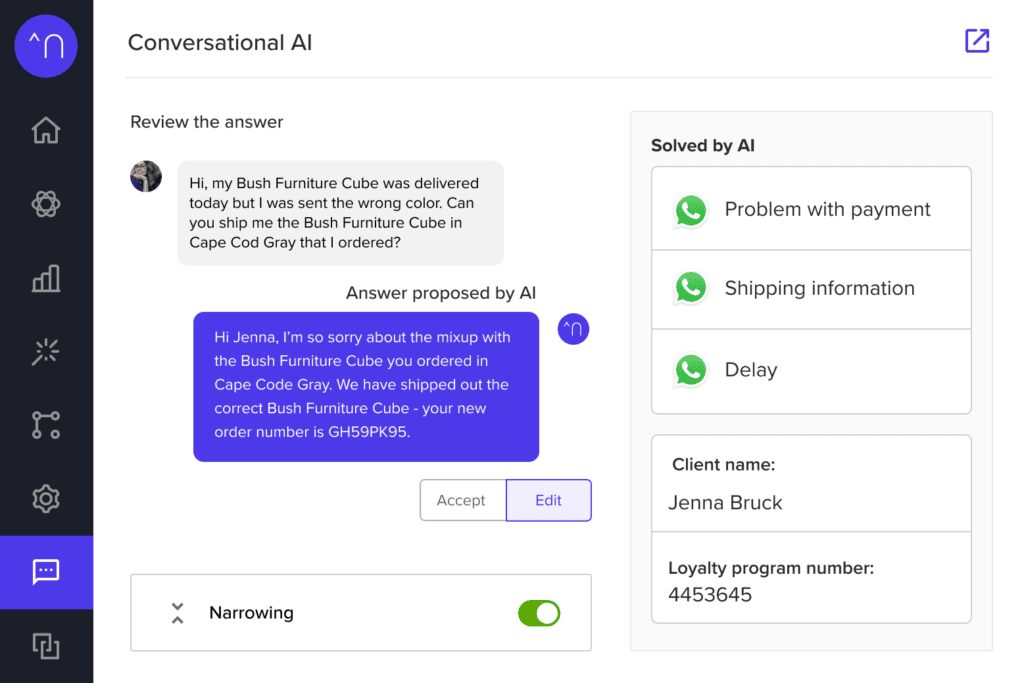
This can help eliminate many first-touch sales and support tickets, ensuring timely responses and higher satisfaction rates. Many of these AI customer experience platforms have case studies showing they can resolve up to 90% of engagements.
2. Predictive & Prescriptive Analytics
If you dread analyzing spreadsheets, reports, and analytics, you should start looking into AI solutions around analytics. From website analytics to NPD market reports, AI can not only analyze the data to give you key metrics instantly, but it can also predict trends in these reports and offer actionable solutions.
3. AI and Automation
Beyond making things easier, AI and automation tools empower businesses to make data-informed decisions, streamline marketing efforts, and optimize operations.
ChatGPT, Jasper, Dall-e, Stable Diffusion, and Midjourney can help you write articles and instantly generate images.
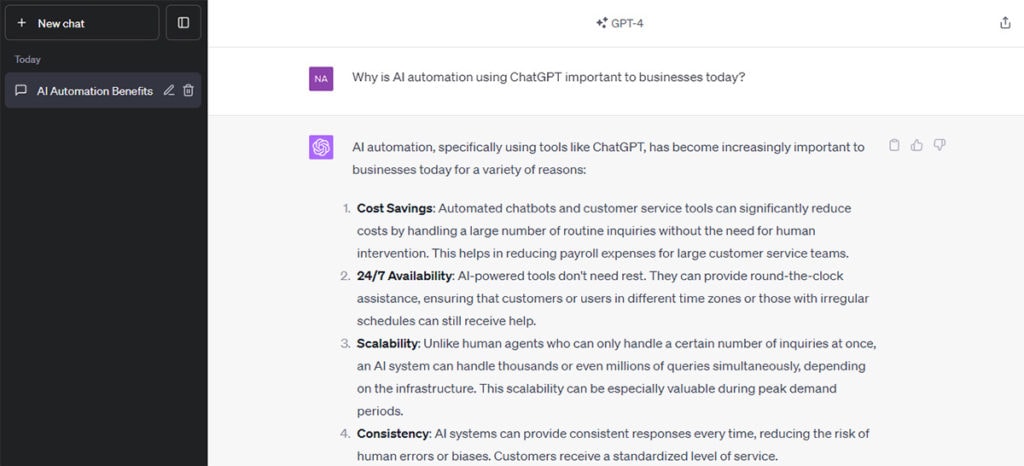
Additionally, with automation tools such as Zapier, you can combine them with your AI tools for complete AI-based automation.
4. Rapid Bootstrapping for Startups
With more tools and technologies available today, especially with the introduction of AI, Startups can get their businesses off the ground faster and do it on a limited budget.
Many online services for starting your business from a legal standpoint, such as trademarks or incorporation, have become easier, faster, and cheaper than ever before. So many tricks can help you get started for the lowest investment possible. In fact, many government organizations have digitalized their services, which can effectively cut out these middlemen services where, with a little bit of research, you can do most of it yourself directly.
There are many ways to leverage AI tools to help your business get off the ground. AI has enabled startups to have AI handle their logo designs, website designs, and even content at scale, dramatically reducing the cost of hiring agencies. Still, it can help you manage many aspects of your startup yourself.
Another solution becoming quite popular among startups is using virtual business addresses, virtual business mailboxes, and virtual business phones, which can drastically offset your startup overhead.
Customer Experience (CX)
Customer Experience is the heart of modern branding today, and brands like Amazon and Starbucks have set the standard for being “Customer Obsessed.”
This means you will bend backward for customers and use it to create unbelievable, unique moments that your loyal customers can’t wait to share with others.
It’s all a numbers game, so the sooner you get more of these positive customer experience stories your customers share, the more likely it will drown out the bad ones.
Have you ever heard how Zappos CEO Tony Hsieh, pretending to be a customer, tested his customer service to see if they could help him order a Pizza, and they did?
That story still lives on today, but sometimes people say it was someone else ordering a bicycle or getting emergency dental help. They keep getting crazier, but regardless of whether they are true, it’s created a positive brand association that Zappos will do anything to help people.
Here are some ways to start improving your customer experience within your business.
5. Post-Purchase Engagement
Beyond the sale lies the realm of brand management and continuous engagement. Nurturing post-purchase relationships solidifies brand loyalty and spurs repeat business.
Did you know that the average shopper checks their order status an average of 4.6 times after purchase? Something as simple as an automated or structured process for post-purchase engagements can help them save time from having to check it themselves, which puts their mind at ease.
On top of that, one study found that an average of 52% of purchases are made on a whim. This means that 52% of them may be experiencing buyer’s remorse immediately after a sale, questioning their purchase, and considering canceling their order. Post-purchase engagement can put them at ease and help them overcome this feeling.
Some great out-of-the-box solutions have built incredible post-purchase engagement tools. One is the Shop app, an excellent payment processing platform that automatically notifies customers of their order status by text, email, and in-app notifications.
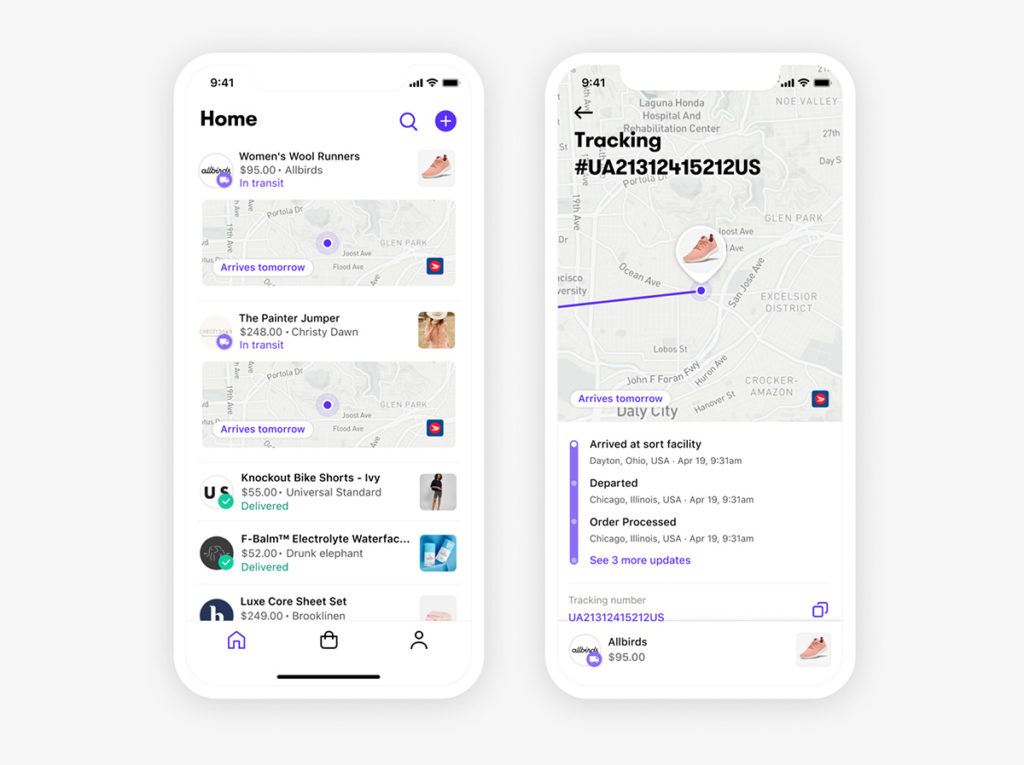
6. Crisis Communication Plans
Nothing is more fun than dealing with a fire you are unprepared for, right? Wrong, it’s the absolute worst. It’s Defcon 4, and everyone’s screaming, “Something needs to be done,” yet no one knows what to do exactly.
That’s why crisis communication strategies are indispensable for protecting your brand image and reputation by ensuring swift and effective responses during unexpected PR challenges. Consider developing a crisis playbook that anyone can follow to resolve issues quickly.
7. Human-centered Design
We are all humans here, so why not design things for you and the customer? Putting users at the heart of design results in solutions that resonate.
It can help you avoid over-engineering products and services just because you can. Providing products or services that cater to consumer needs is much more important today.
Human-centered design isn’t something new. It’s been around for decades, yet people often forget its power. Remember what MP3 players were like before the iPod, what phones were like before the iPhone. Heck, remember what roads were like before pavement and sidewalks?
These examples show human-centered design’s revolutionary power on the world and how it’s often the prerequisite for massive success.
8. Micro-Moments
Seizing micro-moments means engaging consumers when they’re most receptive. This real-time engagement is a goldmine for businesses to drive conversions and brand recognition.
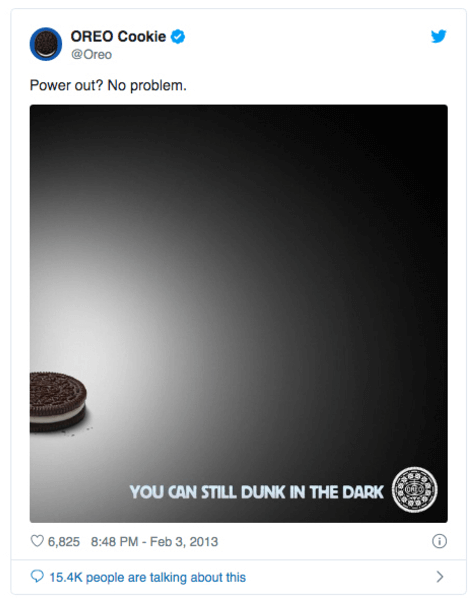
Another example of good branding would be to post something on social media that is relevant to an actual event occurring in real-time. During the 2013 Super Bowl gaming, an unexpected half-hour power blackout occurred. In a spark of brilliance that will go down in history, Oreo Cookie sent out this amazingly well-timed tweet that said, “Power out? No Problem. You Can Still Dunk In The Dark.
Micro-moments are all about answering the questions they didn’t even know they had just when they are about to ask themselves it.
9. Unboxing Experience
Apple set the benchmark for the open-box experience; now, it has become a common purchasing experience that people look for. The joy of unboxing amplifies product value and creates opportunities where they are more likely to share their experience, fostering word-of-mouth marketing and amplifying brand awareness.
10. Touchpoint Consistency
Mcdonald’s has become the ubiquitous brand it is today due to one simple thing: consistency. Uniformity across touchpoints reinforces brand identity, builds trust, and ensures that every brand promise is living up to what it promises.
Take steps to reevaluate all your brand’s touchpoints to determine if there is consistency in your company’s products, services, and messaging.
11. User Feedback Loops and Crowdsourcing Ideas
Don’t be afraid to ask the customer what they think. In fact, they often will appreciate being part of the process. Allowing them to have a say in how a company’s product is made, its features, and its colors provides customers with an invaluable sense of clout.
Don’t be afraid to crowdsource ideas by showing them upcoming products or services and asking them what they think. They won’t hesitate to share their opinions, and if they are lucky, they get to tell all their friends, “yea, they made it this way because I told them to.”
One of the most recent successful examples of effectively crowdsourcing ideas was Lay’s “Do Us A Flavor” campaign, which asked fans to submit their potato chip ideas to win 1 Million dollars.
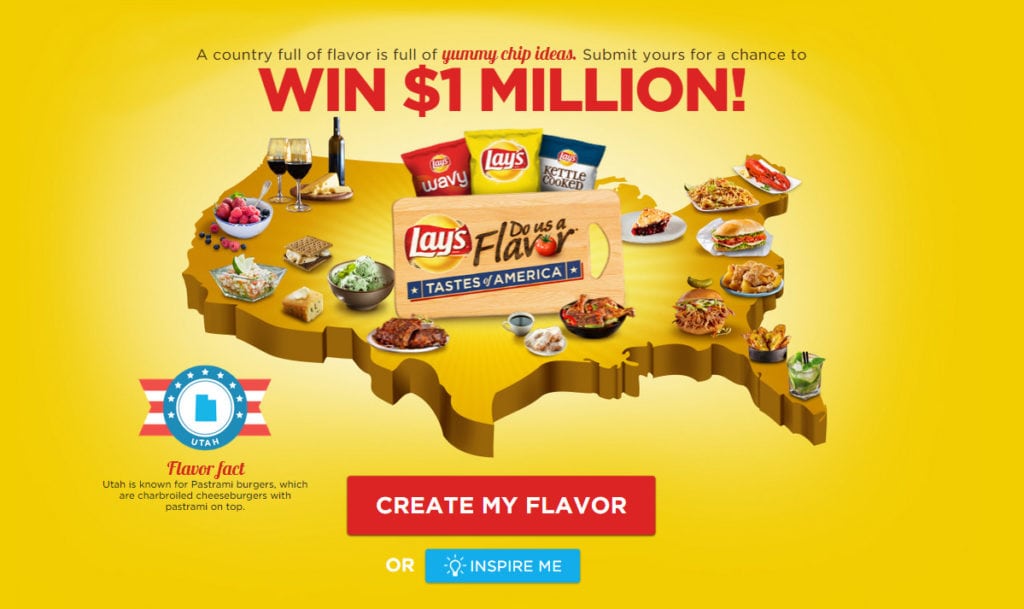
These loops align businesses with evolving consumer needs and reduce the chances that you aren’t creating something that won’t sell.
Multi-Channel Marketing
Are you on TikTok yet? What about Threads? No doubt it has been asked before. Engaging on diverse platforms ensures broader reach, helping your business capture a wider audience for more brand visibility and engagement.
12. Short-form Video Campaigns
Platforms like TikTok and Instagram Reels are today’s zeitgeist. Sprout Social found that Reels had a 14% reach rate, while other posts only saw 9% and 10%.
So it’s obvious that using them amplifies brand reach much better than traditional posts today. Consider using posts only for evergreen topics, stuff that won’t ever be dated, and use Reels for everything else.
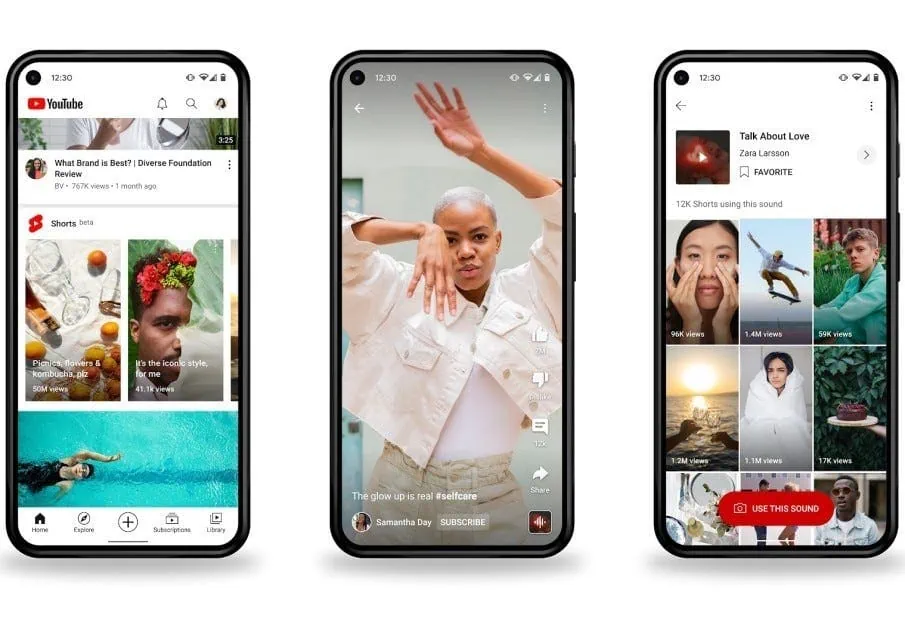
Consider your feed as a gallery and ask yourself if everything ties together.
If you want to maximize your TikTok post effectiveness, check out our guide Best Times To Post On TikTok For Businesses In 2024.
13. Omnichannel Marketing
Make sure you have a cohesive and consistent brand and experience across touchpoints, which means making the purchase process look and feel all the same on your website, mobile device, phone, or in-store.
It helps customers feel like you are organized and have all your ducks in a row, which builds trust and loyalty.
Brands such as IKEA have done this extraordinarily well. Whether in-store, online, or even browsing their catalog, the same settings and layouts across all platforms exist.
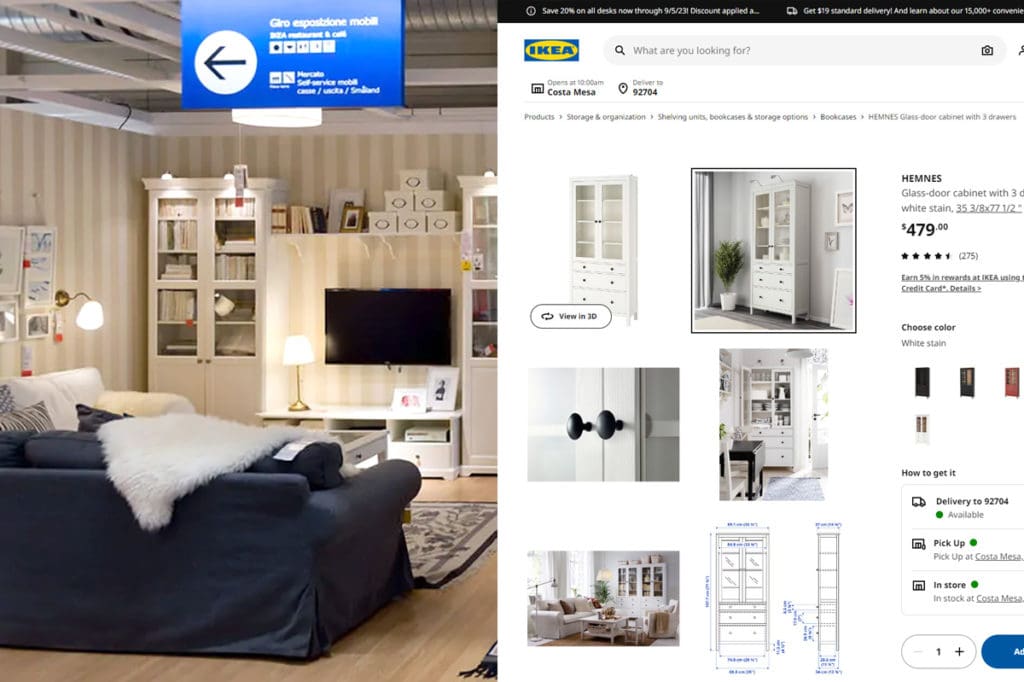
14. Live Streaming
Use Twitch, YouTube Live, or Kick to offer direct live engagement. Live interactions create a personal 1-on-1 atmosphere and help create a deeper brand-customer bond between your brand and the customer.
It’s where you might find some of your biggest fans who will appreciate your brand and even your biggest trolls, who you can help directly.
We’ve found that even when you can’t help a customer, it’s still a valuable branding experience when everyone watching sees how hard you’ve tried, and they won’t forget it.
While VTubing is one of the hottest emerging trends, it has so far been limited to use by individual influencers; however, it doesn’t mean there isn’t an opportunity for brands to take advantage of this hot trend to promote their mascots or create a virtual spokesperson VTuber to represent their brand. Imagine an Anime version of the Wendy’s girl or the Burger King.
15. Ephemeral Content
Platforms like Snapchat and Instagram Stories create a sense of urgency. Temporary posts heighten consumer intrigue and drive quick, spontaneous actions.
According to HubSpot, around 43% of social media users watch Stories more than other videos on Instagram.
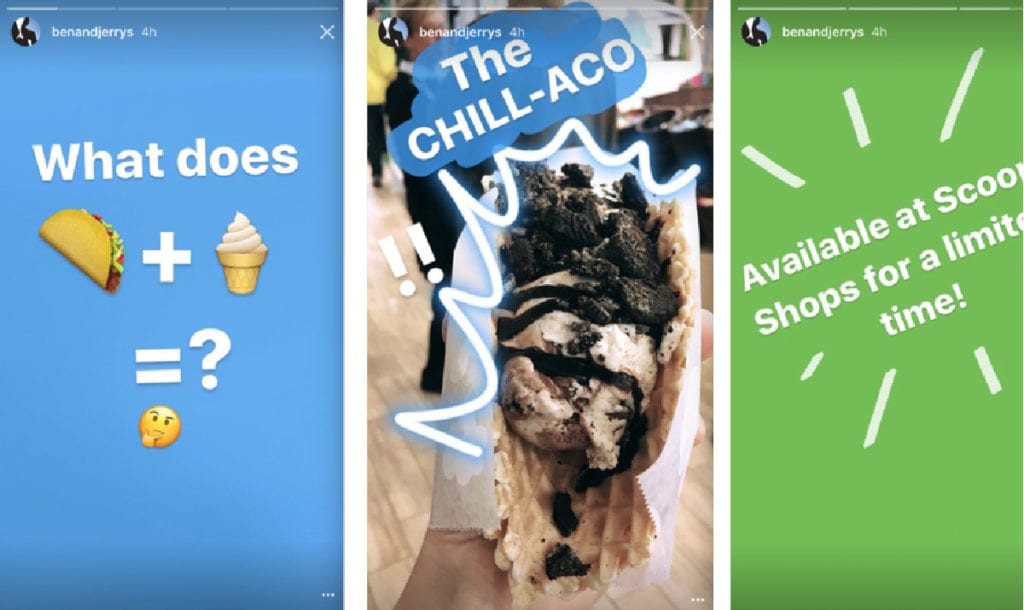
It also helps to keep your social spaces uncluttered. No one wants to see sales banners and promos that have already passed. That makes them think they should wait rather than buy now.
16. Meme Marketing
Riding the meme wave offers virality. Using trending memes helps to integrate your brand into popular culture, showing your audience that “you’re cool too.”
And you know what? They can be super sticky and likely to be shared when they hit on a common sentiment in the community.
Gaming companies have done an excellent job of creating meme posts that are funny, timely, relevant, and current. Look at this example created by Razer that speaks emotionally to how gamers feel.
17. User-generated Content
Nothing says we are authentic more than using real customers for your marketing communications. Using authentic customer voices by showcasing testimonials or user content builds trust and authenticity in the brand message.
Creating a program that works takes time. In the beginning, you might feel the quality of their shared messages isn’t the best quality or even up to your standards, but in time, they will begin to compete to show the best versions of their voice on your platform.
Take a look at brands like Nike, where in the beginning, customers shared images that were, let’s be honest, janky, but now customers take the time and effort to make it look professional on their own.
18. Text Marketing
Remember how post-purchase engagements are important and can increase customer satisfaction? Text messaging is usually the best and most effective way of doing that.
They are light, informative, and less likely to get lost as an email. Direct, personalized text via SMS or apps ensures timely communication, fosters immediacy, and drives actionable responses. As a side-effect, it can alleviate potential buyers’ remorse and reduce your support team’s load.
19. 360-Degree Video Content
Web tools have evolved so much, making it easier to produce 360-degree video content and lightweight so they don’t affect your website’s load time as they once did.
There are all-in-one solutions like Ortery, which provide both the hardware and software for you to get started.
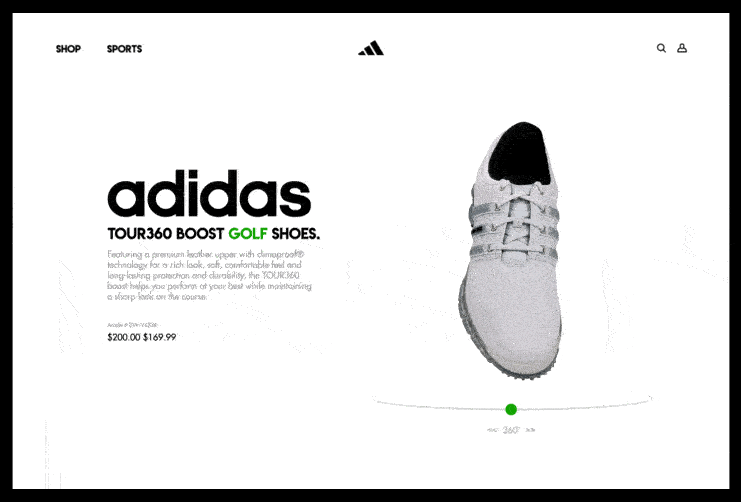
20. Growth Hacking
Growth hacking means trying, doing, and testing everything but with the most minimal effort. The goal is to quickly figure out which works best and then test different versions of that solution to find the best solution.
And this goes for everything you do. It could be on the digital marketing side, such as trying multiple ads, and as soon as you gauge which one works, try more versions of that one.
Or even regarding operations such as how to post or pre-purchase emails. Do you send it out 24 hours later, 48 hours, or how often after that?
21. Social Commerce
It’s easier to do this now than ever. Nearly all major social media marketing platforms have the built-in ability for customers to click on a post and immediately purchase your product or service right from their social media platform, and it’s no cost to you. Only time and effort.
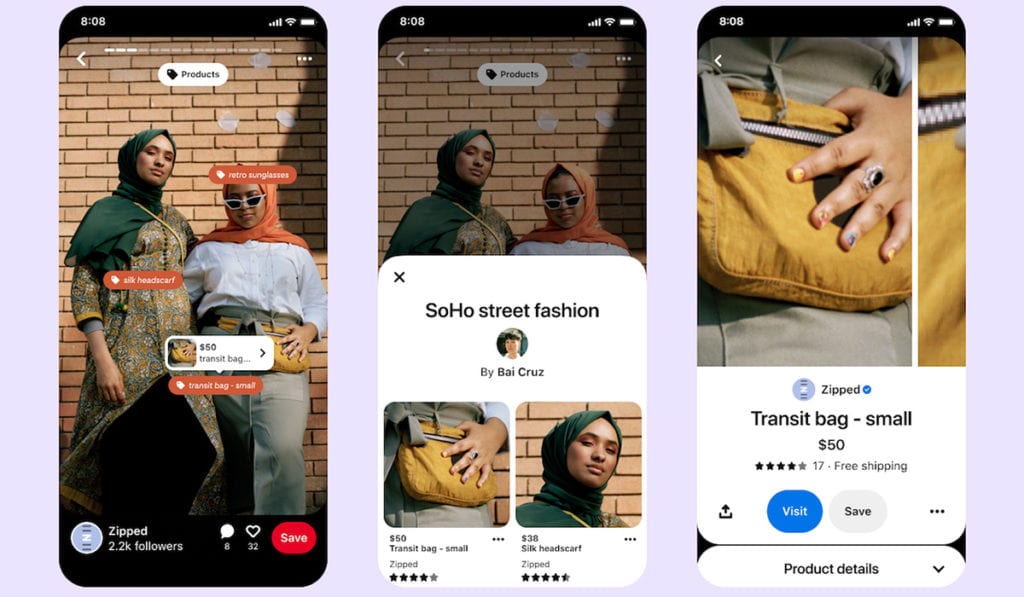
If you aren’t already doing it, you should because that’s only the tip of the iceberg. With AI beginning to integrate with these social platforms, it will automatically take your products for purchase into other people’s posts when they allow it.
E-commerce Focus
Well, if you aren’t already online, then you better get on there ASAP. However, if you are, there are a few new things to consider doing if you aren’t already.
22. Data-Driven Decision Making
Let’s be honest. That gut feeling isn’t working as well these days as cold, hard, irrefutable numbers. How you feel things are or should be is nowhere near as important as how things should be.
Using metrics and analytics in strategic decisions is absolutely essential these days. However, the initial cost may seem like an obstacle when you consider the long-term savings from avoiding investing in the wrong products, missing the rise in negative public sentiment before they become viral, or industry-wide trends.

Unlike physical retail stores, e-commerce gives you access to a wealth of information and statistics you need to access and do something with. You’ll realize how invaluable it is to have tools to help you have hard numbers to support or contradict your gut feelings.
23. Dynamic Pricing
Adjusting pricing based on demand, time, customer segment, or even real-time demographics is now absolutely possible. Dynamic Pricing ensures that you are pricing your products properly at the right times to the right people and can dramatically improve your margins.
Both simple product price and demand monitoring software and AI-based demand forecasting are options you can explore.
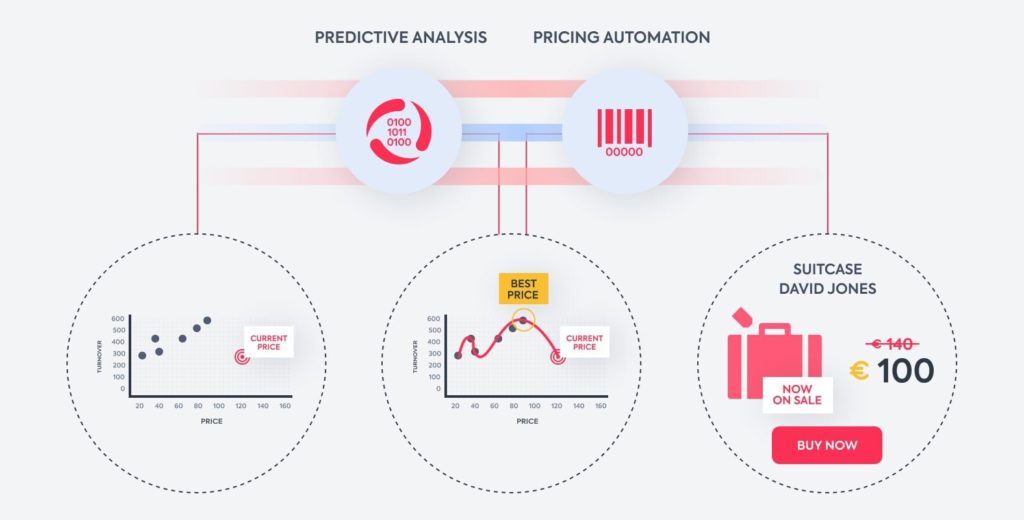
Or you can even do it yourself. I kid you not, but I know of one CEO of a Fortune 500 company who still to this day is adjusting the pricing for over 200 products twice a day, and this is one of the key factors to why he’s the number one brand in his industry.
24. Flexible Payment Options
Introduce various payment methods for potential customers, including various credit cards, financing options, or even cryptocurrencies.
In today’s rising costs and prices, more and more people are turning to flexible payment options for big-ticket items. Services like Affirm, Klarna, and Afterpay are some of the top solutions today, and they integrate easily into your existing e-commerce platform.
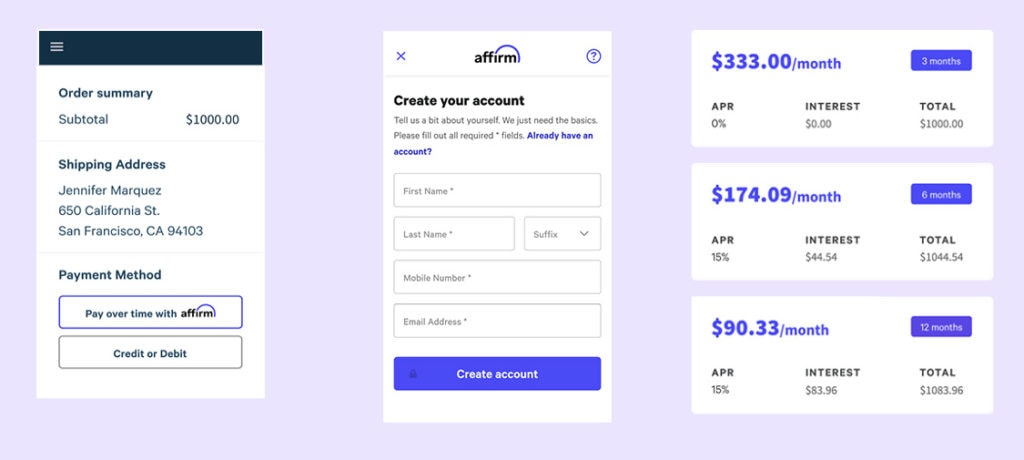
Don’t forget that these companies want to help you sell products, more so during big sales periods and holidays. They can even work with you to create promos like 0% interest for six or 12 months to help boost your sales during the busy seasons.
25. Cross-Selling and Upselling
More and more, we are starting to see brands that are offering those “buy two or more for a discount.” You can maximize customer value, drive sales, and increase sales volume through strategic product or service bundles.
Many software tools out there easily integrate into your e-commerce platform that will automatically create bundles and upsell your products and services based on real-time customer behaviors
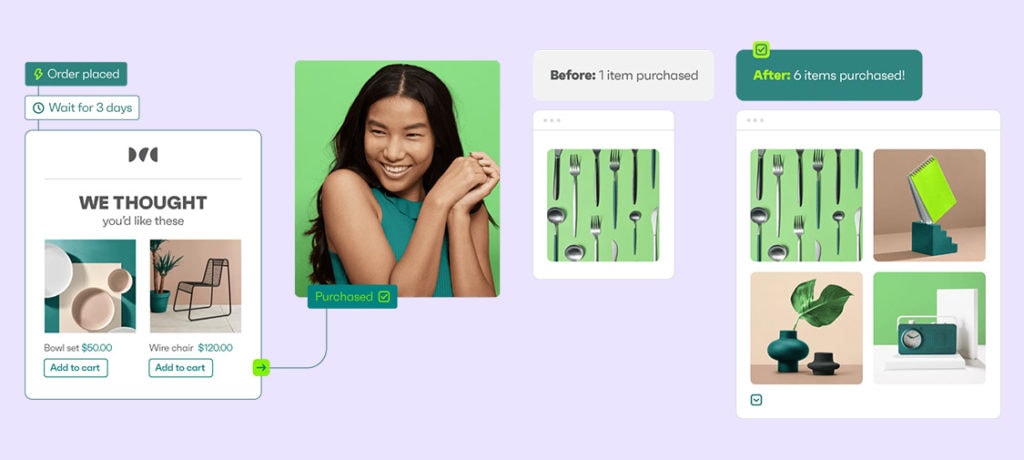
26. Whitespace Usability and Branding
Long gone are the days of flashy, complex websites. It’s all about minimalism these days. It is just a scientific fact that clean black text on a light background is the easiest to read, and more now than ever, people want to cut past the noise and fluff to get to where they want to go as fast and easily as possible.
Don’t worry too much about how it reflects the brand strategy. Your brand and visual design language for marketing shouldn’t trump usability on your website.
Take Volcom, for example, although the brand is known for its gritty urban street style of marketing and design. They’ve done a great job of making their website easy to navigate and use without sacrificing their strong brand voice.
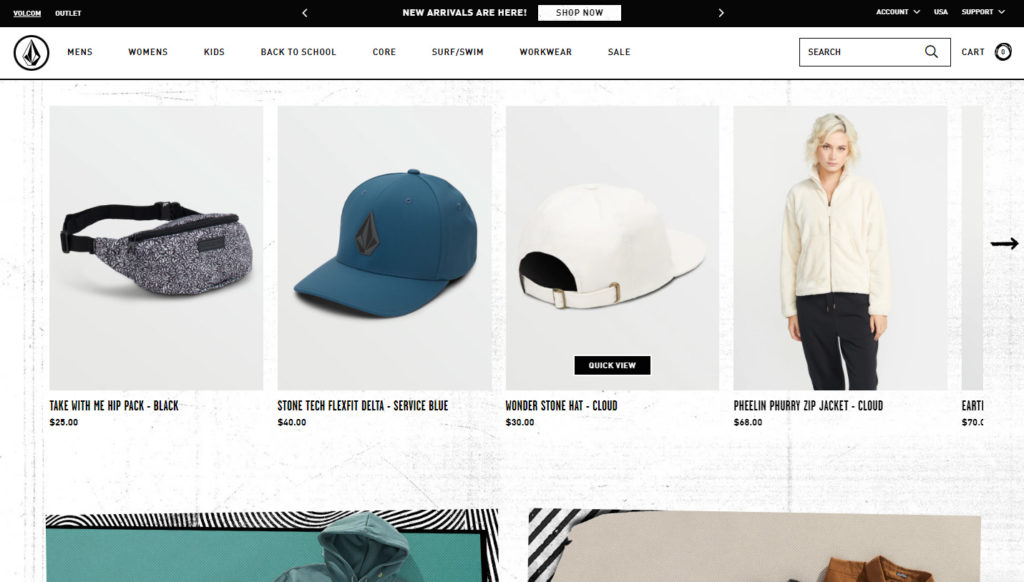
Employee Focus
There was a time when the customer was the number one priority, and dead last were employees. However, times have changed, and with so many options for mobility and remote work, employees have many more options to find a workplace that actually cares about them.
Taiwan Semiconductor Manufacturing Company (TSMC), one of the largest semiconductor companies in the world that power the chips in nearly every mobile phone and computer today, reported that substantial droves of their engineers, who, in many cases, have multiple PhDs, are quitting their well-paying jobs after only a year because they didn’t like the working conditions and didn’t find the work fulfilling.
These employees cited that they would rather work at a job that paid less but was more fulfilling and provided a better work-life balance. As a result, TSMC is on the verge of a significant talent shortage that threatens its existence.
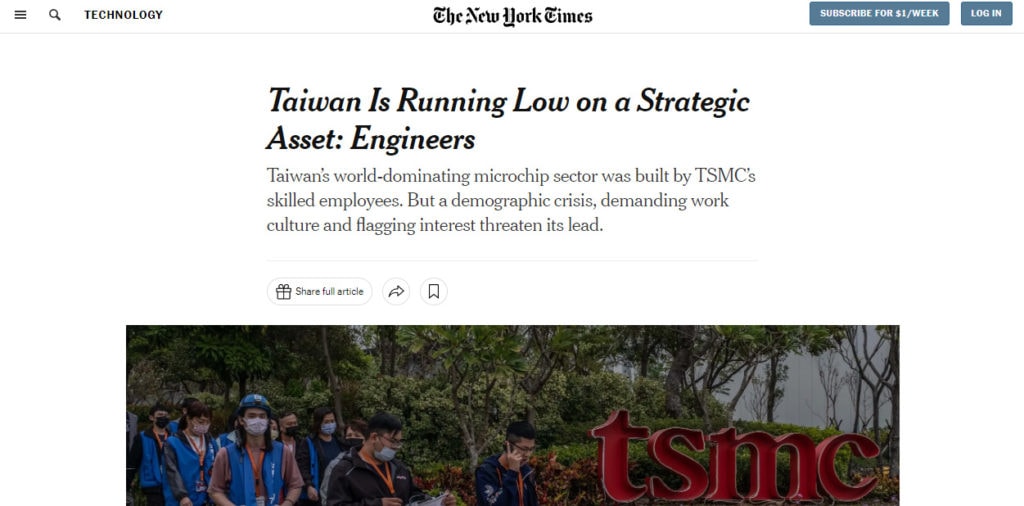
That’s why brands focus on employee satisfaction as much as customer satisfaction. Here are some ways you can improve your employees’ well-being.
27. Employee Well-being Programs
Prioritizing employees’ mental and physical health is critical now more than ever. As more people have begun returning to the office post-COVID, more are facing an existential crisis.
Whether it’s because they worked from home for a long time or lost their jobs, people are reevaluating their lives and questioning why they work where they do. This has made employee well-being an increasingly important factor in employee productivity and retention.
Below are more specific examples of implementing these initiatives in your business.
28. Remote Work Optimization
The pandemic was a huge wake-up call for many businesses, and the quick implementation and adaption to remote work was why some brands thrived and other businesses failed during and after the pandemic.

Creating a solid plan for a decentralized workforce is essential these days. The market research organization Zippia did a study on the effectiveness of remote work and found that post-pandemic, 27% of Americans now work remotely, which is expected to rise steadily.
In fact, the study also found that 40% of workers believe they were more productive working from home, with 32.2% of managers confirming productivity has risen. Remote work has already significantly reduced absenteeism by 56%, reduced stress by 57%, and improved morale by 54%.
It’s expected that 36.3 million Americans will work remotely by 2025, a 417% increase from pre-pandemic levels. In fact, 59% of employees will choose a remote job over an in-office one, even for lower pay without a loss in productivity.
So, if you aren’t offering remote work options, you may lose your best talent to another business that does.
29. Mental Health Initiatives
Mental health initiatives are more important now than ever. In addition to the “Post-COVID anxiety” that many are feeling today due to a sense of instability in the workplace, more and more people are entering the workforce with no clear sense of what they want to do or be.
These feelings can create a huge burden on them both mentally and physically. Consider offering On-Site counseling as a service for employees to reach out to in times of stress.
In fact, if you’ve already transitioned to a remote workforce, you can save even more money by offering these mental health services on demand for remote employees rather than paying for a full-time in-house counselor.
Additionally, you may benefit from a hybrid program where employees can come to the office for some part of the week, giving them an outlet if they feel too isolated from remote work.
30. Continuous Learning
I’ve always had this mantra: if I can teach an employee to do my job as well as myself, then I don’t mind them taking it. And if they move on, I am proud to say that our business was an effective stepping stone for building superstars.
The more you can do to help your employees learn and grow, the more you increase the likelihood that they will stay.
Consider sending your employees to specialized training camps to up their skills or hold open in-house educational sessions where they can participate.
Some of the most successful businesses in the world, from Google to Microsoft, have done this effectively and found that creating in-house learning opportunities has not only improved their employees’ skills and productivity but also created openings for lateral mobility where employees can move around to different departments rather than looking for new jobs.
31. Employee Feedback Loop
One of the simplest and most overlooked aspects of businesses today is implementing an employee feedback loop system where employees can discreetly share their feedback with management.
It’s just a simple fact that if your employees aren’t sharing their concerns and problems, how can a business expect to solve them?
Employee Feedback Loop systems can be as simple as a physical drop box where employees can drop anonymous notes or merely instill a sense of security where employees can feel safe to reach out to any manager without judgment and that it will be taken seriously.
Take, for example, all the recent controversies surrounding huge companies such as Riot Games or Blizzard/Activision, who faced public criticism after citing their systemic sexual misconduct. A robust employee feedback loop system could have prevented these issues from happening in the first place.
Another key aspect of the employee feedback loop is the critical skill of leadership communications. Just eliciting feedback is one part, but understanding how to interpret it based on an employee’s communication style is equally important.
It’s not just about listening, but understanding your employees’ unique traits and how they communicate their feelings can better equip managers to craft effective strategies around them to improve their productivity, teamwork, and the company culture.
Personalized Marketing
Personalized marketing is more prevalent now than ever before. You may already be a subject of it and not even know it. Personalized marketing uses data analytics to tailor marketing efforts to individual consumer preferences.
In Charles Duhigg’s New York Times article, he tells the story of a Minneapolis father who stormed into a local Target store to complain about how inappropriate it was for them to send his innocent teen daughter coupons for baby supplies.
As the story plays out, it turns out that Target’s data-mining based on purchase patterns was able to predict that his daughter was likely pregnant accurately. As a result, the father later apologized when he confirmed the truth.
Personalized marketing is incredibly powerful and accurate; brands like Target, Best Buy, and Amazon use them with surgical precision.
32. Hyper-Personalization and Personalization at Scale
You are probably used to retailers like Amazon suggesting what you should buy based on your purchase history or how direct-to-consumer services like Stitch Fix are curating fashion boxes tailored to your specific size, style, and personality.
These are all examples of Hyper-Personalization, where you use data analysis and digital technology to deliver individualized relevant content to customers exactly when needed.
Personalization at scale takes it one step further by using AI to craft tailored messages at the perfect time and adjust the tone and language based on what it knows about each customer.
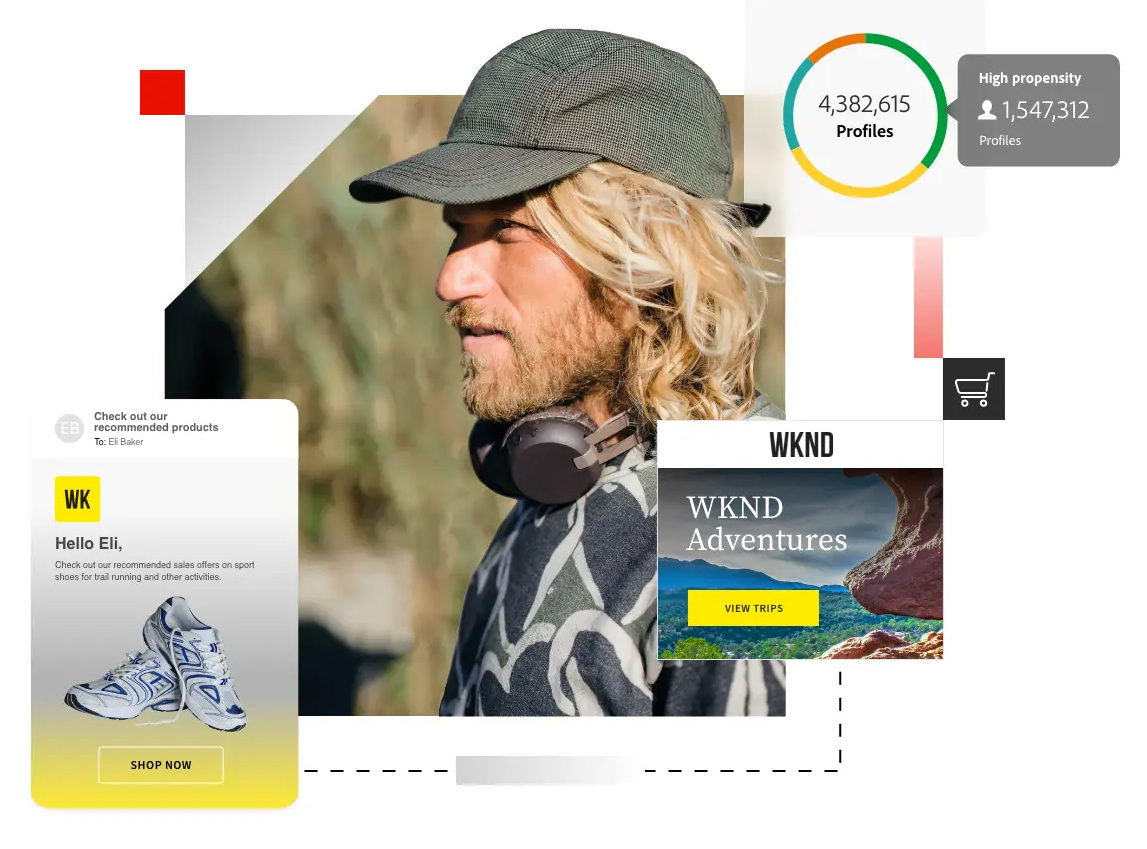
Pay attention the next time you see a TV commercial in your language, especially if it’s obscure. And it’s not limited to marketing. Personalization at scale can also improve your customer experience with AI replying to customers in their native language.
Some of the AI tools mentioned earlier are already capable of this, so start exploring your options. It’s simply incredible.
33. Neuro-Marketing and Neuro-Branding
Advancements in technology today are making it easier to track and analyze consumer behavior than ever before, from how people shop in retail stores to eye-tracking on e-commerce websites to even scanning people’s brainwaves to see how they react to interacting with certain products.
Even Frito-Lay used Neuro-Marketing to discover that their bags were too shiny and loud, leading them to switch to a matte finish and quitter bags recently, and it only took nearly 100 years to figure that out.
For an investment of as little as $10,000, using cheap ceiling cameras throughout a store, a retail store can see which grocery items were purchased more frequently together in real-time. Using that data, they rearranged products on the shelf overnight to improve the speed at which people found what they sought.
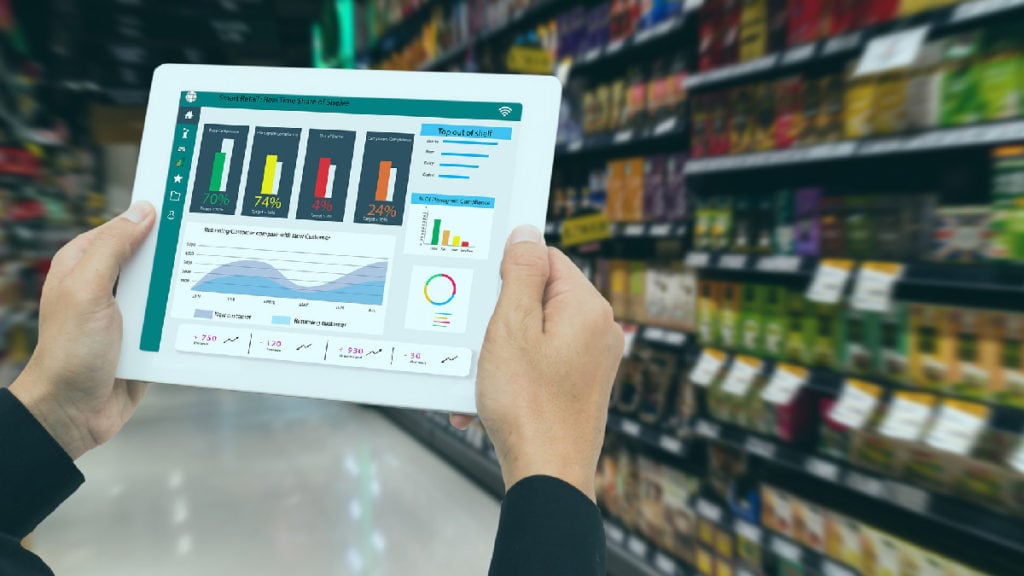
34. Focused Niche Market Engagement
Niche marketing strategy and branding is when you identify and cater to specific market segments for your customers’ interests.
For example, if you were a gaming PC manufacturer. Instead of a generalized gaming PC ad, you might make some specifically geared for gamers who play first-person shooters, gamers who like anime, or influencers.

Not only does concentrating on specialized markets help to keep your competitive advantage and reduce competition, but it also helps you avoid alienating certain consumer segments who might not feel your brand aligns with their unique personal identity.
Rewards and Partnerships
35. Nano-Influencer Partnerships
Partnerships with well-known influencers can be very effective but also very costly. Top Twitch, YouTube Live, Instagram, and TikTok sponsorships can start at $5,000 monthly and reach upwards of $20,000 monthly. Additionally, when it comes to contract renewals, they may likely ask for substantially more.
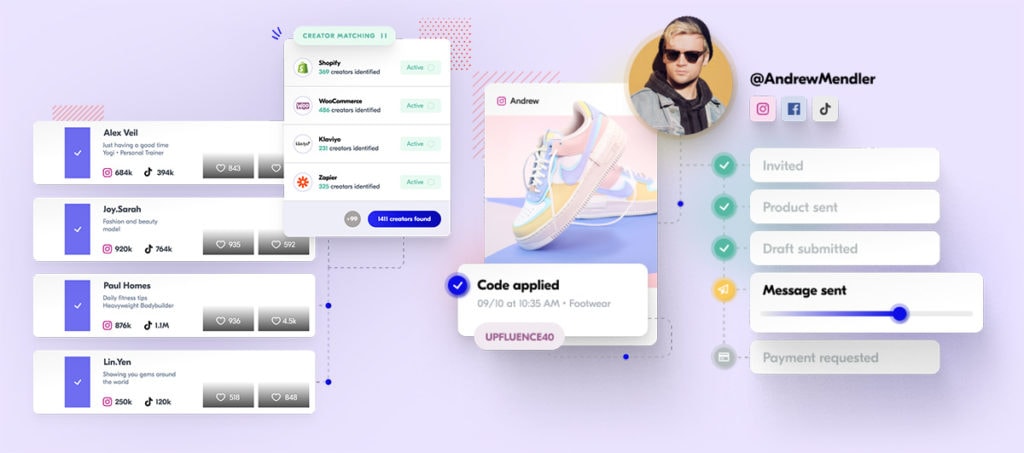
While they may reach millions in one, fell swoop, having an army of hundreds of smaller influencers with a reach of a few thousand people can achieve the same results at a much lower investment cost.
Additionally, it can satisfy your brand’s need to offer customers more personalized marketing by using influencers who speak directly to all these unique niches of consumers.
36. Employee Brand Advocacy
Sure, you can hope your employees to be advocates of your brand. After all, their livelihoods depend on it. However, you can’t expect it from them if they aren’t incentivized.
Jeff Bezos said, “Your brand is what other people say about you when you’re not in the room,” especially regarding employees. If you aren’t incentivizing them to say good things, they won’t hesitate to say bad things.
You can incentivize your employees by allowing them to get commissions from their referrals, no matter their department. However, you can incentivize them simply by making them proud of where they work.
Creating an environment they love to work for gives them a stronger and deeper purpose than money. People would much rather tell people how much they love where they work than share the embarrassment of working at a place they hate.
37. Limited-Edition Collaborations
Limited-edition collaborations may seem difficult and costly, especially regarding manufacturing costs, minimum order quantities, and the risk of not succeeding.
However, planning out for it now could prepare you to take advantage of a powerful new avenue for huge profits.
Take Nike, for example, which started with their Nike ID program offering personalized sneakers where customers could customize every detail from the sole to the laces.
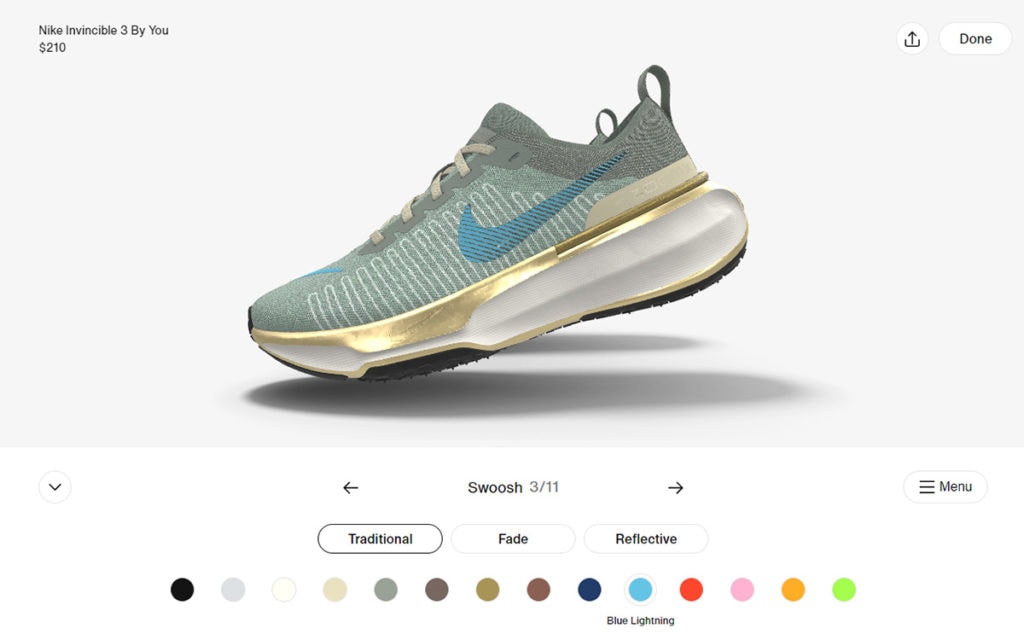
By perfecting this process, they could expand it easily into collaborations with high-profile athletes and artists for short-run limited-edition collaborations.
Today, these limited-edition collaborations are so highly sought after that entire blogs are dedicated to them, and niche secondary markets like StockX are emerging around them.
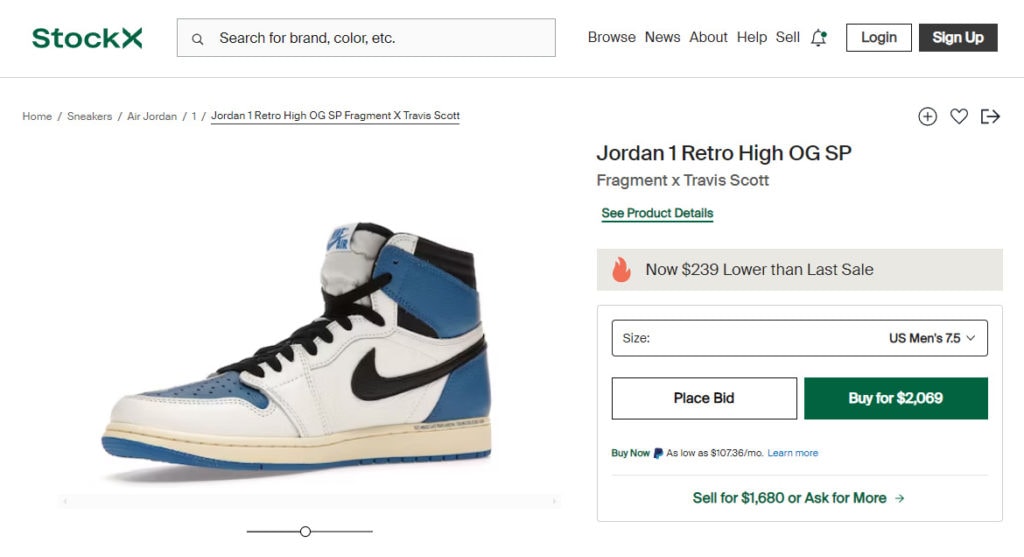
One of the fastest-growing collaborations today is with the Anime and Video Gaming industries. Finding ways to collaborate with these industries can give you a huge boost in your brand association with a massive dedicated fan base.
38. Affiliate Marketing
Affiliate marketing has been around forever since the old days of Commission Junction and other platforms. However, in today’s fast-paced world of social sharing, it’s more important than ever to capitalize on these potential opportunities.
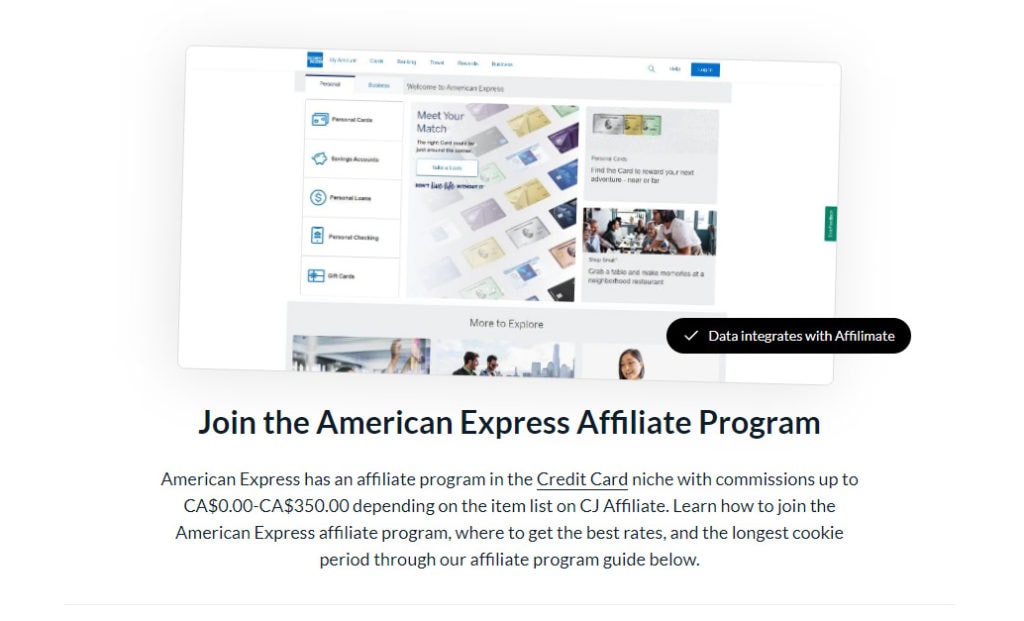
If you aren’t already doing it, look at affiliate networks like Impact, AWIN, and ShareASale. They are much easier now to implement seamlessly into your e-commerce program.
Additionally, they can be customized and fine-tuned like never before. Now, you can segment different tiers and rewards and automate these systems to offer dynamic rewards tailored to each affiliate.
39. Loyalty and Rewards Programs
Loyalty and rewards programs can certainly help you increase the chances of more sales due to customer referrals. However, there are other benefits to these programs that you might be missing out on.
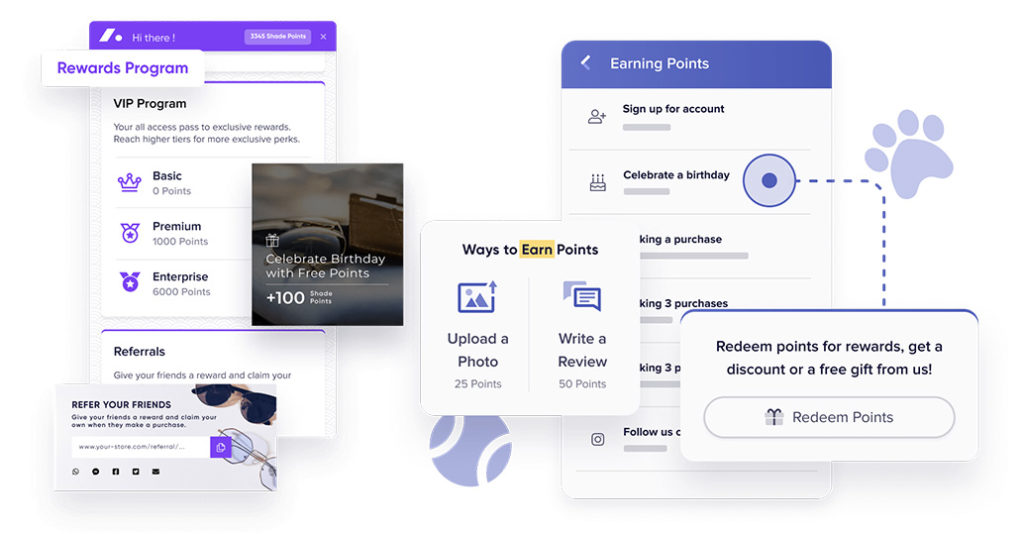
When a customer purchases something from you, the likelihood they will share something negative with others often happens before they even get the product, for example, when their shipments are delayed or taking longer than expected.
You’ve brought them into your court by engaging them with a loyalty or reward program. They now have the potential to make money when they say positive things about their experience, so they will naturally be hesitant to share anything negative too early.
That slight delay gives your business more chances to solve problems and improve customer satisfaction before they become real problems you can’t control.
Numerous post-purchase engagement platforms on the market help you implement your loyalty and rewards programs today that can integrate easily into your existing CRM or CX systems.
40. Gamified Rewards
It’s become instinctual for people to look for deals online shopping. As soon as I see a discount code field, I naturally start searching on deals sites to see what I can find, and often, I’ll get steered over to competitors with better discount deals.
When you don’t offer rewards upfront, you risk losing a valuable transaction when people have their money out and ask you to take it.
Many retailers today are starting to implement these tactics with great success. Some examples include pop-ups with a wheel of rewards that randomly offer them some time-sensitive reward, creating a sense of urgency and personalization.
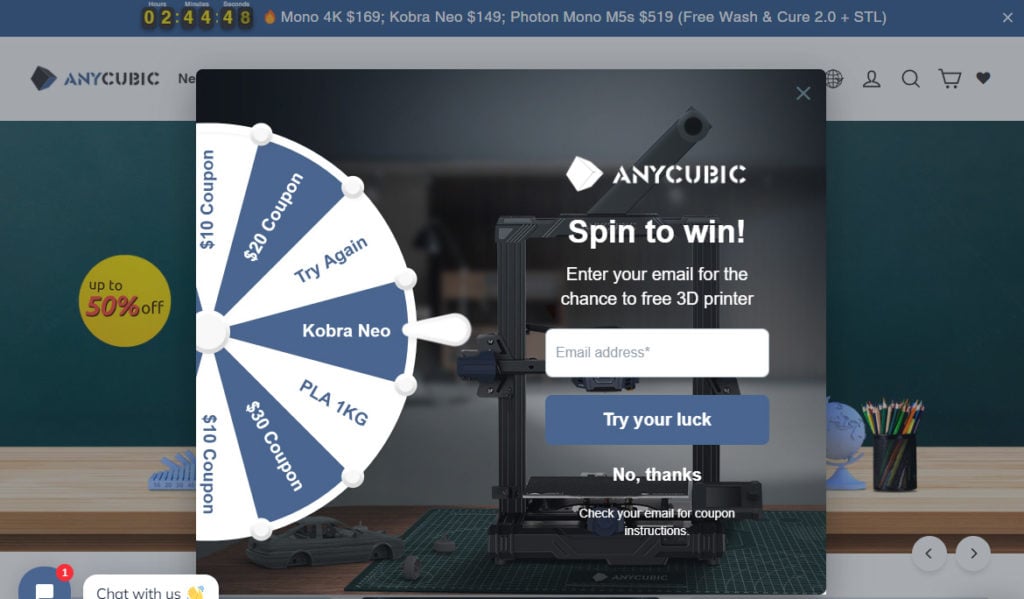
We all know it’s random, but we can’t help but feel in that instant that we were in some way special and luckier than others, no matter what the reward is.
Community Engagement
In today’s hyper-connected era, community engagement is a cornerstone for businesses and brands, fostering loyalty, driving organic growth, and reinforcing brand values through genuine, two-way interactions with their audience. A deeply engaged community amplifies a brand’s voice and provides invaluable insights and feedback, making businesses more agile and attuned to their customers’ needs.
41. Joining Communities VS Building Communities
In the past, most companies focused on building in-house managed communities enclosed in the safety of their websites to control every detail of the conversation.
However, now, customers are more likely to talk about your brand in larger communities that are out of your control. You might miss many important discussions if you aren’t part of that conversation.
Many brands are abandoning their private forums and BBS’ and moving to platforms like Reddit, Facebook groups, and community blogs.
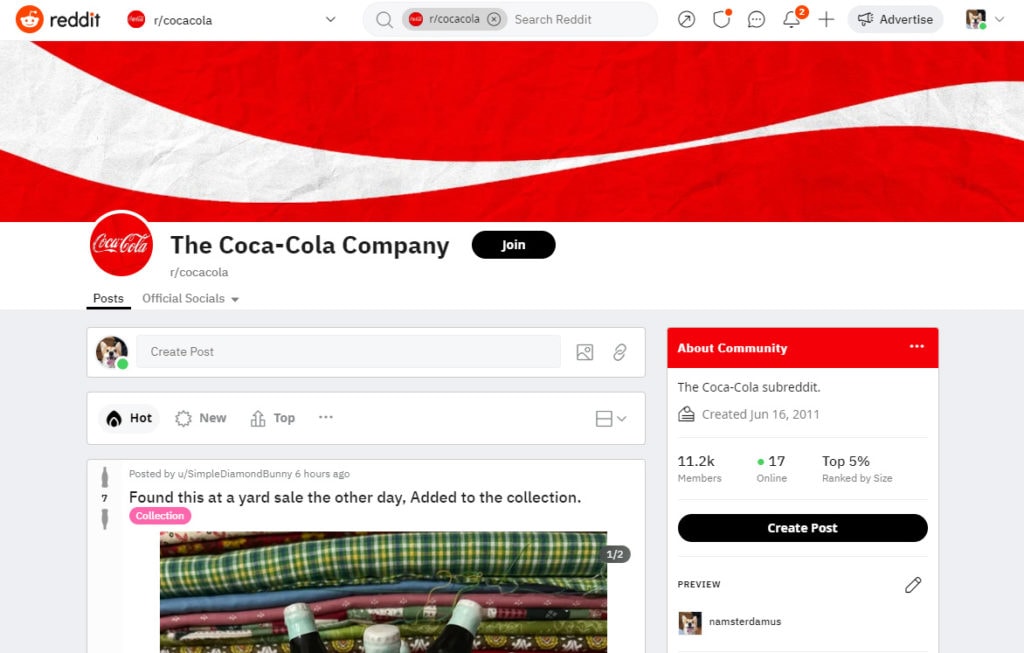
If you aren’t a part of these communities yet, you should join today, create your subreddit, and start building it out now. If you don’t, others may take it into their own hands before you do. I’ve had clients who had to fight legally for over a year or longer to retake subreddits for their brand created by others.
Some other communities to consider include Hacker News, Voat, and Tildes.
Marketing and Branding
I’m sure you’ve already considered all the basic aspects of marketing and branding, like developing a brand story, using brand guidelines, developing consistency in voice, color palette and tone, etc. So, let’s look at some things you might not have considered that other successful brands are using right now.
42. Interactive and Auditory Logos
There was a time back in the old “Macromedia Flash” days when everything sounded and was animated. However, as page speed and optimization became king, everyone abandoned interactive elements to keep the Google algorithms happy.
However, with new web design standards such as HTML5, WebP, OGG, and others, creating interactive auditory elements is easier and lighter, so they won’t affect the optimization of your website.




So why are they valuable? Interactive and auditory logos help connect the human senses to many more parts of the brain and create subtle emotional connections that become more memorable, ensuring they won’t forget your brand so easily.
43. Emotional Branding and Marketing
Emotional branding and marketing are all about storytelling. It’s always easier for people to tell others how they feel about your brand’s purpose and products than it is for them to list specifications and features. Even more powerful is when the brand does the talking for them.
In fact, emotional reasoning can often trump rational thinking. Research conducted by some top brands such as NVIDIA and Intel found that most STEM (science, technology, engineering, and mathematics) students at higher education institutes were likelier to buy a higher-priced Apple MacBook over a higher-performance and significantly more affordable Windows Laptop.
Here’s an actual picture of Stanford STEM students in a classroom. How many Apple laptops do you see?

This is all due to the strong emotional branding and marketing efforts that Apple has made over decades to create a positive perception that it’s simply cooler to have a Mac than a PC, and that perception has become a reality.
44. Micro Localized Marketing
Most advertising platforms today, from Google to Facebook, are incredibly powerful in segmenting demographics into very specific microdemographics, allowing you to craft tailored marketing.
Often, brands don’t take that extra step because it often takes a lot of work and planning, but the value will pay off. Clothing brand Uniqlo already makes an effort to use specific fabrics for different sizes, ages, and genders of people in different locations and apply this level of detail to their marketing campaigns and initiatives.
An example of micro-localized marketing could start with segmenting your target audience by location, such as different ads for the East Coast vs. the West Coast. Then, a further segment that targets the market by gender, and then by age, and then even further by hobbies and interests.
This way, the ad you show to a 50-year-old woman in Texas will differ from that to a 16-year-old teen boy in California. Once you try to set up these segments, you’ll have a clear plan for the types of assets you’ll need; after that, it’s just a matter of dropping them in.
45. Nostalgia Marketing
Nostalgia marketing can be a powerful tool for evoking strong emotional connections with your brand. For most people, nostalgia reminds them of happier times, and that’s because once you remind them of those times, their mind immediately makes connections to positive memories. After all, we naturally avoid bad memories while promoting happy ones.
When you use a hit of nostalgia in your marketing mix, you effectively attach your brand to a strong positive memory, further strengthening the brand’s staying power in people’s minds.
Secondly, nostalgia almost never goes out of style for most people. Whether it’s the 70s, 80s, 90s, or even more recently, the 2000s, everyone can find an emotional connection with one of these periods that will resonate with them on a whole new level.
Here’s a great example of nostalgia marketing created by Burger King that created a subtle nod to 1970s ad styles.
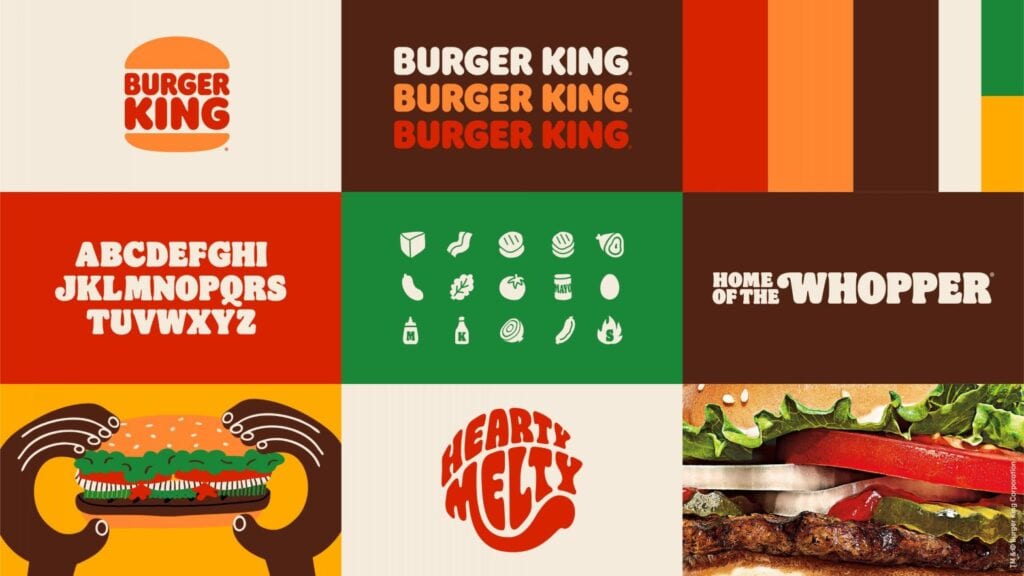
There are many ways to utilize nostalgia in your marketing. It could be the graphic style, the fashion, the language, or the sounds. Brands like Apple have often used music to evoke nostalgia in their advertising, making them widely appealing across all ages.
46. Brand Playlist
As mentioned above, music is a powerful tool for evoking strong positive emotions, yet many brands don’t pay much attention to its value. Often, businesses start with a marketing piece and then attach music to it as an afterthought.
Instead, start with the music and craft your assets around it. One way is to create your brand playlist. You can use Spotify to create a musical playlist representing your brand’s voice.
Of course, if you can afford to license the music, then great. However, if you don’t have an unlimited budget like the rest of us, you can use a platform such as Artlist.io to create a DRM-license-free collection of music that represents your brand.
This creates a clear foundation for the emotions you want your marketing to evoke, and you can maintain consistency in that marketing across all touchpoints.
47. Holistic SEO
When you think about SEO, most people think it’s all about keywords; for most businesses, it is. However, once you have figured out keyword SEO, the next step is to consider a more holistic look at SEO.
This means taking a more comprehensive look at words surrounding your keywords in your metadata and on-page content. You’ll want to consider things like user experience, content quality, and technical aspects of SEO.
As of December 2022, Google released a statement about upcoming updates to its algorithm to expand its previous quality content guidance to include “experience” into its newly dubbed Google E-E-A-T factors for quality content.
Websites need to begin considering if their content meets the Google E-E-A-T criteria: experience, expertise, authoritativeness, and trustworthiness. For 2024 and beyond, ensure your content meets these criteria, or else you might suffer major search engine rank drops.
For example, Airbnb targets travel-related keywords and offers city guides and user reviews, simultaneously enhancing user experience and site relevance.
All these things add value to the user experience beyond their core competency.
Mobile Optimization
While more and more people are shopping online using a mobile device, according to Statista, in the first quarter of 2023, smartphones accounted for 72% of retail site visits in the US. They generated 61% of online shopping orders. On the other hand, desktop computers only generated 26% of retail online traffic and 37% of purchases.
This is a significant shift from only a few years prior when the stats were practically flipped the other way. Some experts hypothesize that it could be due to the increasing nature of “impulse buying,” meaning that since people spend more time on their mobile devices throughout the day, they have more opportunities to buy something on a whim.
48. Mobile-First Design
In 2020, Google announced they would start using a mobile-first indexing process. This doesn’t mean they are indexing the mobile version and a desktop version and prioritizing the mobile version, but rather, they will only use the mobile version for indexing.
This means if your website doesn’t work or is broken on its mobile indexing, it will be ranked accordingly.
It’s understandable and surprising why so many websites are still not mobile-friendly. It’s understandable because redesigning a website is a huge undertaking that requires many resources and risks affecting your ranking and business as it is today.
However, it’s surprising since we all know that Google and search engine optimization rankings are critical to our businesses, and the fact that they are outright telling us, “You need to do this,” should be enough for everyone to scramble and make it their top priority.
Events
49. Hybrid Events
Hybrid events combine in-person attendance with virtual participation, allowing attendees to engage on-site or remotely. While hybrid events have the intrinsic value of offering attendees a choice between live and virtual attendance, they also hold significant monetary potential. Having a virtual component to an event actually opens up opportunities for new revenue streams through virtual admissions fares, sponsorships, and even ad revenue.
A notable example is Apple’s Worldwide Developers Conference (WWDC), which has incorporated live and online elements. For businesses, hybrid events expand reach, catering to a global audience while retaining the intimacy of face-to-face interactions.
50. Brand Festivals
Brand festivals are large-scale events companies organize to celebrate, promote, and engage consumers with their products and culture. Alibaba’s “Singles’ Day” in China is a prime example, turning a shopping holiday into a massive entertainment spectacle.
More recently, we’ve seen some prominent influencers enter the fray, capitalizing on their personal brand strength. One example is the recent Linus Tech Expo, which had its first event in 2017 and has seen an increase in attendance from an estimated 2,000 the previous year to 4,000 attendees in 2023.
These brand events not only deepen customer loyalty and amplify brand awareness, but they can be another source of revenue. Even with only an estimated 4,000 attendees per day, tickets started as low as $35. However, VIP packages could be as much as $10,000, including private meetups and exclusive tours of their facilities. Additionally, it has attracted numerous brands, including Intel and ASUS, which also adds to more revenues through exhibition space and event sponsorships.
Sustainability and Ethics
51. Sustainability May save More than It Costs.
Adopting eco-friendly practices and prioritizing sustainability is not only good for the planet, but it’s also critical to your business. If you haven’t made an effort to make your business more sustainable across all touchpoints, it may affect your bottom line before you know it.
Put aside whether you believe in the effectiveness of sustainability efforts. What matters is that many of the businesses you work with and local state governments do care, and their mandates can not only affect your business but could bring your business to a grinding halt.
It is likely that if you have a business, you either are already selling on Amazon or have plans to. As part of its sustainability initiative in 2017, Amazon began its “Packaging Innovation” initiative. It didn’t affect third-party sellers but greatly impacted vendor partners and other sellers already selling products directly to Amazon.
Businesses that weren’t already using sturdier, lighter, and more compact packaging suddenly faced significant fees from Amazon for not meeting their eco-standards.
Another example was when a number of states working in conjunction with each other, including California, New York, and Washington, to name a few, each implemented their versions of an Energy Commission Assembly Bill, which required all electronics sold in these states to meet a detailed list of energy consumption requirements.
These states would routinely audit products being sold in their states to determine if they met the new standards, and businesses that were not in compliance were severely fined. A number of well-known brands were fined upwards of $100,000 per day for non-compliance, forcing them to pull their products from shelves in these states quickly.
Furthermore, brands that could not meet the new energy consumption standards were outright banned from some states, such as when many of Alienware’s PCs were banned from a handful of states.
Consider making a commitment to cause-related marketing to elevate your brand beyond its profit-motivated purpose.
52. Ethics is all about money and authenticity
Much like sustainability, if we put aside how you personally feel about ethics and socio-political issues, it may all come down to your bottom line. While business and local or even federal governments have not taken as strong of a stance on ethics issues, it will likely become important and unavoidable sooner.
Businesses that want to be prepared for these potential public relations should begin reevaluating what they are doing regarding ethical sourcing, their supply chain, and even ethical business practices.
You should begin considering your alternatives for sourcing your products and raw materials. If increased tariffs or outright bans from certain countries become implemented, do you have backup plans ready?
Lastly, regarding ethics, specifically social and political issues, it’s not about which side of the argument you stand on but how committed you are to your stance. If you take a particular stance on the issue, you must commit to it regardless of how it affects your bottom line.
Suppose your brand seems to be wavering or backtracking on its stance on social or political issues. In that case, consumers may see it as an inauthentic money grab and begin doubting the true authenticity of your brand. As a result, your brand may lose customers on both sides. Take, for example, the recent Bud Light debacle involving Dylan Mulvaney.
Brand authenticity is the sole of your brand, and staying true to it and committing to it across all brand touchpoints can establish a bond of trust that will last a lifetime.
Wrapping Up
Sure, this list of tips and strategies can feel overwhelming, especially when you are inundated with many new and unfamiliar terms like Neuro-Marketing or Ephemeral Content marketing. I know how you feel, but even if you can’t do all these things, you’ve taken the first important step in understanding and becoming aware of them.
You should now be better prepared to react immediately if, at any point in the future, you suddenly need to react immediately.
I suggest you begin implementing some of these easier and more critical strategies sooner rather than later. Things like making your logo interactive, exploring more remote-work options for your employees, or even a brand playlist are simple things you can start working on now. Some more difficult things, like making your website mobile-first-ready, are more critical and should be acted on immediately. After all, you are probably already way behind the ball.
These strategies are not overhyped trends but are already being used by most of the biggest brands and businesses around the world, and because they work, they are likely here to stay.
Frequently Asked Questions
What is the best marketing strategy in 2024?
Across the board, the biggest topic of 2024 is AI, and everyone is asking why it matters and how to use it for my marketing strategy in 2024. Take a deep breath. It’s not as complicated as people make it out to be. In fact, it’s easier to implement into your marketing strategy now more than ever. This article will discuss some easy AI Integrations you can use today.
What are the future trends in marketing in 2024?
The biggest digital marketing trends in 2024 will revolve around social media and your ability to be agile and omnipresent across all channels. With Zuckerberg, Musk, and Trump duking it out over the “New Social Media Wars,” the landscape is becoming more volatile. As vanities flare, all it takes is one Tweet or one Insta-Post, and all of a sudden, masses will jump ship to another platform. We’ll discuss the multi-channel marketing plan you’ll need that ensures you have a voice on every platform, no matter where the audience moves.


